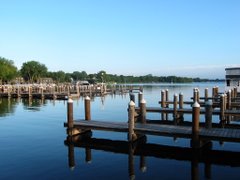My daffodils have been up for weeks now, my backyard prairie had its prescribed burn, I have raked the mulch from my perennial beds, the ice is now long off Lake Minnetonka. Signs of Spring.
As we look forward to another season enjoying beautiful Lake Minnetonka, let’s refresh our awareness of what boaters and lakeshore owners can do to be safe and keep ugly invasive species at bay.
The Lake Minnetonka Association wants Lake Minnetonka to be clean, safe and enjoyable for all. The summer rules for Lake Minnetonka are listed on the LMCD or Hennepin County Water Patrol websites. We urge special attention to safe and courteous boating.
We ask boaters visiting Lake Minnetonka to please take these simple precautions:
• INSPECT your boat, trailer and equipment and remove all vegetation, animals and mud before launching.
• DRAIN all water from live wells, bilges and bait containers – before arriving and away from the lake.
• SPRAY or DRY your boat before arriving – either thoroughly spray with high pressure/high temperature water or allow your boat and equipment to thoroughly dry for five days.
• When arriving at Lake Minnetonka, please be patient with the inspectors.
• For additional information, go to the ‘Stop Aquatic Hitchhikers’ website.
Lakeshore owners should also take precautions when working with water gardens, installing used docks and water structures and working with lake service providers, because these are all potential avenues for invasive species introductions. The Lake Minnetonka Association has received a grant from the Minnesota Department of Natural Resources to prepare a lakeshore owners’ guide – this will soon be available on our website and is being mailed to all Lake Minnetonka lakeshore owners.
Flowering rush, now in Lake Minnetonka, is believed to have escaped from a water garden because it is a commonly-used plant in water gardens. Last year’s Flowering rush discovery highlights the importance of prevention actions we should all be taking.
In 2010, less than a year after its discovery, we know Flowering rush to be found in only several areas of Lake Minnetonka. The Lake Minnetonka Association believes that until the full extent of the infestation is documented, areas of known infestation should be restricted to harvesters and boaters, because these activities are known to accelerate the spread of the plant around the lake.
Unfortunately, these conservation sreps are not going to be taken. In fact, there are no plans to document the extent of the infestation and there are no plans to control or contain the infestation. Because the plant is extremely difficult to identify as well as the fact that the plant has an underwater growth form, it will be impossible for harvesters or boaters to avoid. In deed, last year after the time of its first discovery, LMCD harvesters were operating in bays later discovered to have had Flowering rush. Alas, Flowering rush will likely spread rapidly around Lake Minnetonka. In other lakes, Flowering rush grows in thick beds, like cattails, often precluding access and activity.
It is not yet too late to keep additional invasive species out. We must dedicate our resources to comprehensive prevention actions because, as the Flowering rush example illustrates, once they get into the lake, the only action we are left with is coping. With respect to other invasive species, we have no early detection plans, no rapid response plans, no control or containment plans.
Individuals – boaters and lakeshore owners – have an important role – indeed an obligation - in preventing invasive species from getting into Lake Minnetonka. We urge all to become aware of and get into the habit of taking simple prevention actions. We all have the responsibility to keep Lake Minnetonka safe and clean.
Sunday, April 18, 2010
Subscribe to:
Post Comments (Atom)


No comments:
Post a Comment